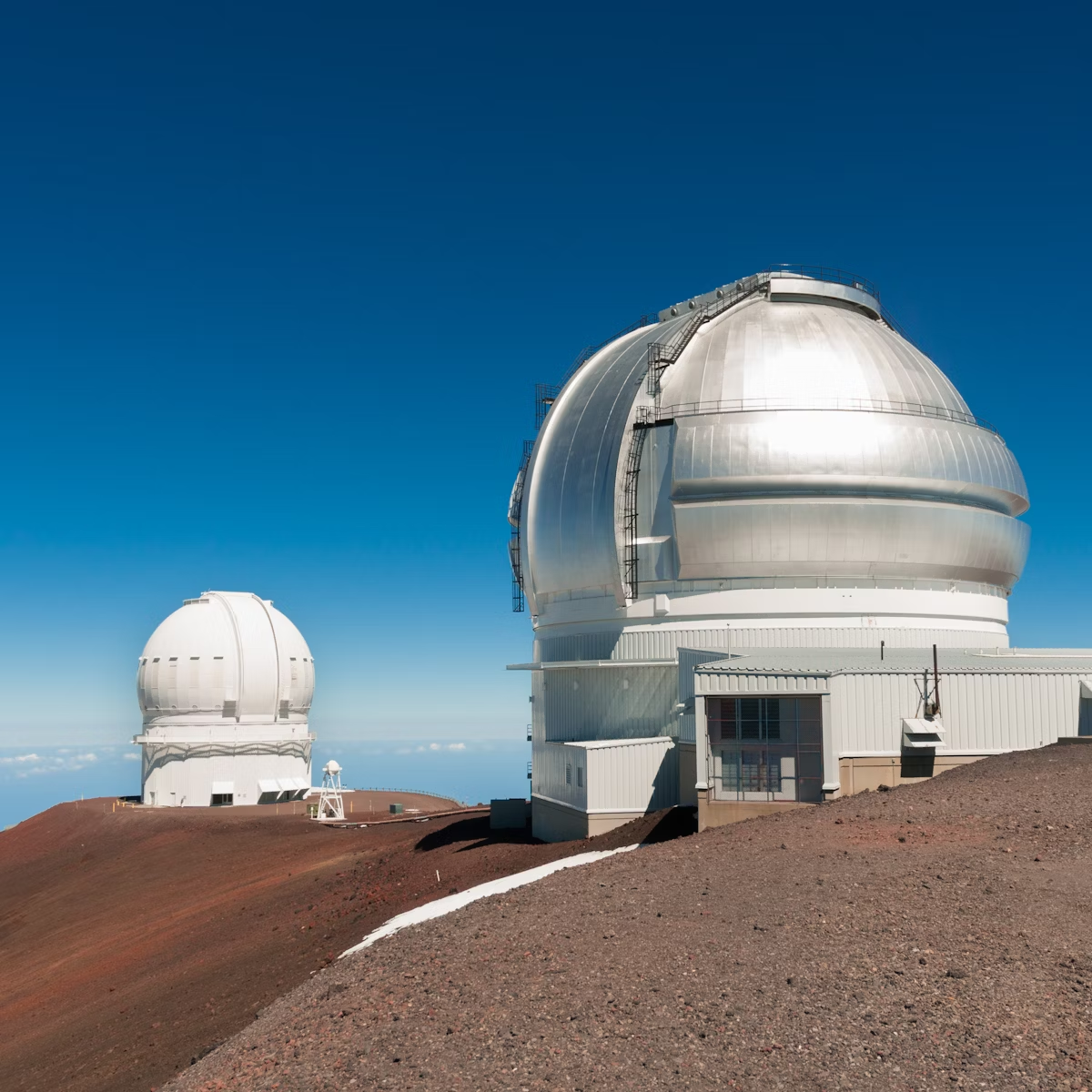UH2.2 (if you go metric, UH88 if you prefer inches) was a pioneer of Mauna Kea. As the first large telescope on the mountain (1970), its great imagery convinced the world that the roof of Hawaiʻi was the best place to gaze at the heavens. However, UH2.2 is also something of a public enemy: observations from this telescope determined that Pluto is not a planet after all, but just another chunk of space debris floating in the Kuiper Belt.
Lonely Planet's must-see attractions

0.3 MILES
At 13,796ft in the air, you are above 40% of the atmosphere and 90% of its water vapor – apparently perfect conditions for growing the giant mushroom-like…

Puʻukohola Heiau National Historic Site
27.22 MILES
By 1790 Kamehameha the Great had conquered Maui, Lanaʻi and Molokaʻi. But power over his home island of Hawaiʻi was a challenge. When told by a prophet…

0.96 MILES
On an island with a conspicuous dearth of surface water, tiny Lake Waiʻau's existence on a porous lava mountain is something of an enigma. Hawaiian…

26.95 MILES
Arguably Hilo's most beautiful spot, these sprawling Japanese gardens are perfect for picnicking. Named for Hawaii's last queen (r 1891–93), the 30-acre…

20.75 MILES
The island's best ‘tourist waterfall’ is found at this outstanding, family-friendly park. Walk the paved path counterclockwise, on a loop that traverses…

Hapuna Beach State Recreation Area
25.94 MILES
Hapuna Beach is world famous for its magnificent half-mile sweep of white powder sand and fabulously clear waters. In summer, waves are calm and allow…

25.79 MILES
This lovely powdering of white sand is a local favorite but remains somewhat off the tourist radar. Both family-friendly and gay-friendly, its calm,…

26.23 MILES
Crescent-shaped Kaunaʻoa Bay (nicknamed 'Mauna Kea Beach' after Rockefeller built his landmark hotel on it) is blanketed in powdery white sand, with clear…
Nearby Maunakea attractions
0.06 MILES
When this 26.6ft telescope is paired with its twin in Chile, they are able to cover almost the entire sky. In 2014, Gemini used speckle imaging to help…
2. United Kingdom Infrared Telescope
0.07 MILES
Even though this 3.8m (12.5ft) telescope is the second-largest dedicated infrared telescope in the world, it will soon be decommissioned according to the…
3. University of Hawai‘i 0.9m Telescope
0.11 MILES
Hoku Kea was meant to be a teaching telescope, but the original 0.9m (3ft) mirror was delivered warped and the manufacturer went bankrupt. So, it has…
4. Canada-France-Hawaii Telescope
0.16 MILES
This 3.6m (11.8ft) optical/infrared telescope's first light was 1979, making it the oldest operational telescope on the mountain. It specializes in wide…
0.18 MILES
Hawaiian cultural practitioners ask that visitors respect the sacred true summit of Mauna Kea and not hike the trail to the top of the cinder cone (13…
6. NASA Infrared Telescope Facility
0.28 MILES
Able to utilize multiple sensors, this 3m (9.8ft) infrared telescope has diverse applications, from close-to-home observations – like measuring the ozone…
0.3 MILES
At 13,796ft in the air, you are above 40% of the atmosphere and 90% of its water vapor – apparently perfect conditions for growing the giant mushroom-like…
0.4 MILES
Mirrors larger than 26.2ft are so heavy that gravity distorts them as they move. Keck's breakthrough design overcame that limitation in 1993 by using a…







